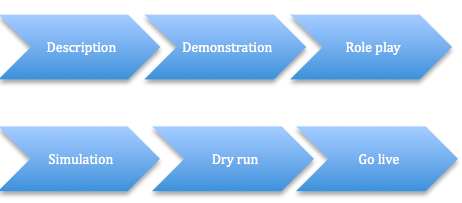My TPI
Oh if only I’d saved ’em!
I’ve done the TPI before. The first was in Dan Pratt’s learning theory seminar during my MA. It was one of the last courses I completed and always look back at that time with a cringe: I was your archetypal “critical” (snarky, in other words) new post-graduate student. Dan, thankfully, seems to have forgiven me. I recall that the domain I expected to score highest in–social reform–was lower than a couple of others.
Fast forward almost ten years and I completed the TPI again. This time I was a post-doc supporting Gary Poole in managing the educational program of a CIHR Strategic Training Program on collaborative health research. Nothing stands out in my mind from that go at the TPI.
Last week’s score fairly floored me–though as I went through the questions I expected that I wouldn’t have many dominant or recessive perspectives. But no dominant and only one recessive perspective Had you given me the five perspectives I would have ranked mine (with the most important at the top) rather differently than the TPI says. here’s a wee table to contrast my results with my own assumptions:
| Self-predicted | Actual | Score |
| Nurturing | Nurturing |
35 |
| Social Reform | Developmental |
34 |
| Apprenticeship | Transmission |
33 |
| Developmental | Social Reform |
29 |
| Transmission | Apprenticeship |
28* |
*Recessive perspective
I suppose getting Nurturing right is a good thing. What’s particularly striking to me is that Nurturing, Developmental and Transmission are so closely clustered together. Having ruminated on this for a few days I think I can (somewhat) articulate why my score are so…middling.
Purpose of education: I’ve taught in private post-secondary, non-profilt and community organizations. Since 1998 I’ve taught almost exclusively at universities, save a brief stint in workplace learning at the 2010 Olympics here in Vancouver (for which I developed the customer service training. Which is pretty cool thing to be able to say). When I started in community education I was solidly in the “learner driven” camp: adults should determine what they learn and when; my role was to support and facilitate this. Nurturing, in other words.
But I found that sometimes learners were sometimes inclined to sell themselves short. Their expectations of themselves were meagre; often their materials circumstances were too. So I rather quickly felt that part of my job was to nudge–sometimes push–people to work past their self-imposed limitations. In particular, working with persons with persistent mental illness or addiction and those who experience racism on a daily basis inspired the Social Reformer in me. Inspiration is needed to remake society; sometimes it comes extrinsically. I tried to–try to–be that inspiration at times.
I also encountered a fair number of learners at the private college (a vocational program for travel and tourism) were there based on HRDC funding: long-term unemployed or new Canadians. Some had language skills that were barriers: others living with PTSD. Paradoxically it was the folks facing the greatest challenges who more often wanted to work the hardest. Inspiring! But I left with a sense that imposing education on some people is a waste of everyone’s time and money. A minority of people though–1 or 2 per course, or about 10 a year, out of 200+ learners.
At the college and the Olympics I encountered a transfer of learning (Caffarella, 2004) gap between classroom sessions and real-world practice. Folks would leave a session smiling and confident that they “got it”, but the emails and phone calls would start coming in a few days: “Can you come by and show me this again? I thought I understood it but…” For the Olympics this was not great news: there’s no way a training team of 15 could provide that level of service to a workforce of 25,000+ people at Games time.
So I integrated an Apprenticeship model within a hierarchical structure. We spent a lot of time working with team leads in their workspaces. First we got them skilled up to the level needed to do the jobs of their team; next we skilled them to deliver the training–and follow-up–within their own teams. The structures for all of these sessions were:

Some divisions compressed this a bit, depending on the skill and workforce. But it’s very much dependent on Apprenticeship to work.
Transmission? Well I would almost rate it a zero, but for two facts. First, we live in a world of things created in learning cultures dominated by transmission : lecture and test, or what Freire (1971) calls the “banking method” of education. And there are any number of professional bodies that need to manage licensure and continuing education enterprises, for which things like multiple choice testing is a huge labour and time saver. But in my educational world, such approaches would be used for establishing a foundation knowledge, and for providing formative feedback to learners. I only use integrative assignments in my teaching.